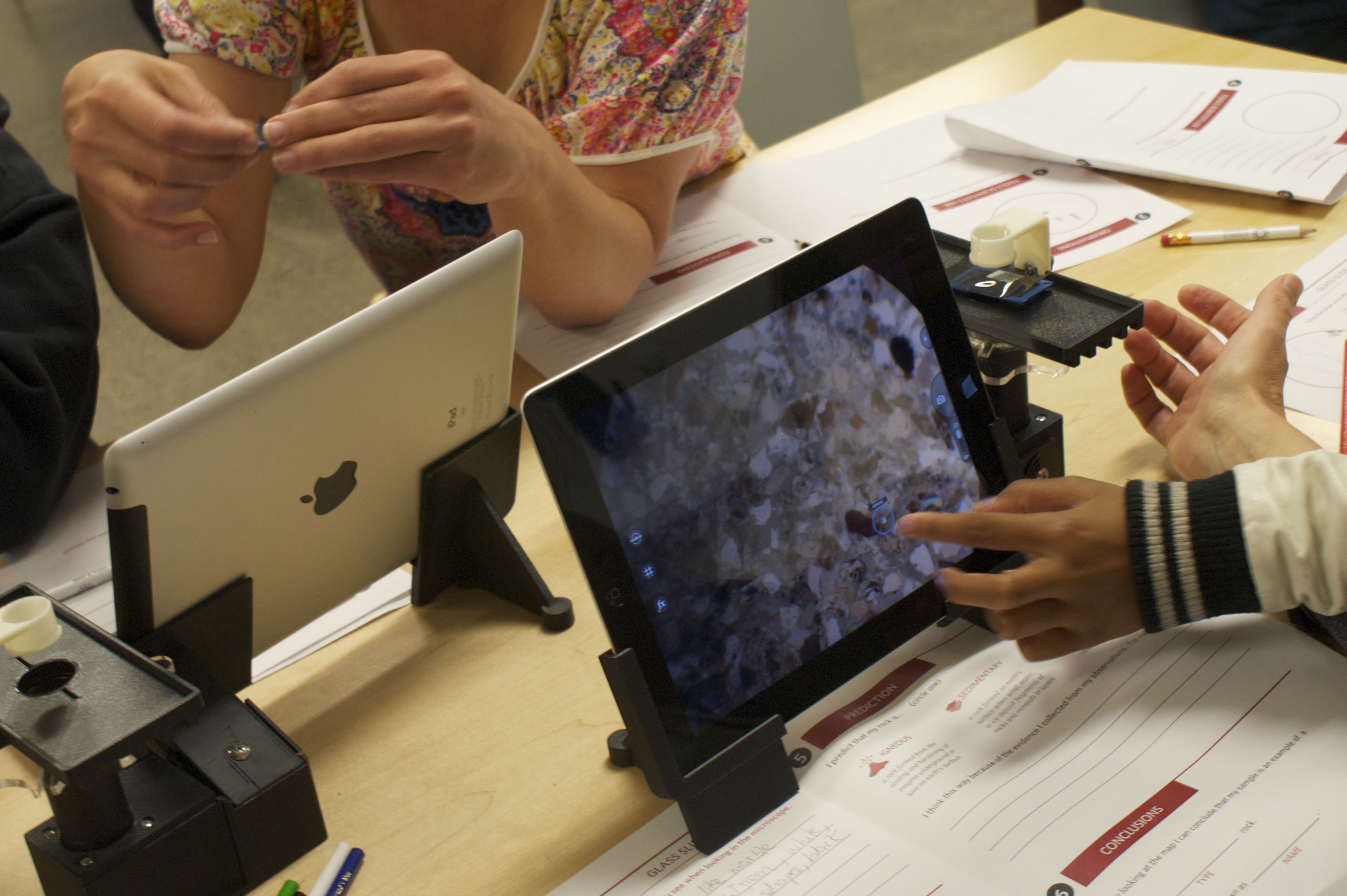While we've attended (and exhibited!) at the Faire before, the past couple of years my focus has been on educational technologies – this year, biology and robotics in particular.
These were my top finds:
3D cells from molding clay
My absolute favorite were these simple, beautiful cell models children could mold in minutes using standard Crayola ModelMagic molding clay. We invited the folks at GalaxyGoo come run a lesson at Sesat School!
 |
| Photo source: GalaxyGoo / Flickr |
Folks at the Fletcher Lab at UC Berkeley demonstrated CellScope, a cool iPad stand that turns the iPad into a graphically enticing, easy-to-use microscope capable of recording images and video. One of the few educational uses of tablets I've seen so far, that really make sense. The CellScope stands are not available commercially yet, but hopefully will soon.
 |
| Photo source: CellScope |
Out of several robot construction kits, Vex and Makeblock looked best. Their robots are robust (we tested chucking one of the Vexes around a bit and managed to make no irreparable damage) and can be controlled both manually and programmatically. Vex also runs competitions for schools. We're going to start with Makeblock, but I'm thinking to get a Vex kit as well, for comparison.
Submarine drone
We've promised the children that our annual treasure hunt will eventually lead to real treasure. The problem is most undiscovered treasure is located at the bottom of the ocean in hard-to-access shipwrecks. One of the ways to get to them is by way of remote-controlled submarine. My dream was to build one when I was a child! The OpenRov underwater robot is a candidate solution. We met the founders of this Berkeley startup at last year's Maker Faire, and they are great. This year we stopped by their exhibit to discuss launching one of their submarines to explore the Big Sur coastal waters by way of a flying drone – an experiment that could lead us closer to the eventual dream of finding submerged treasure.
Here's a video of the OpenRov team sending their rover to explore a small shipwreck at the bottom of Lake Tahoe, CA:
Record-setting paper plane
E learned to fold standard paper airplanes around age four, perfected his folding skills with hours of origami, and has by now graduated to his own paper plane designs. One of his engineer-heroes is "Paper airplane guy" John Collins, who designed the Guinness Book of Records' furthest-flying paper airplane (it flew 226 feet 10 inches, or 69.13 meters - over half a football field!) John's exhibit at Maker Faire was so packed we could barely squeeze in, but when his colorful planes took flight they were visible far and wide. His New World Champion Paper Airplane Book has excellent illustrations, and also contains one of the clearest explanations of the physics of flight – a topic we've been learning about recently. Here's a video of the record-breaking flight:

No comments:
Post a Comment